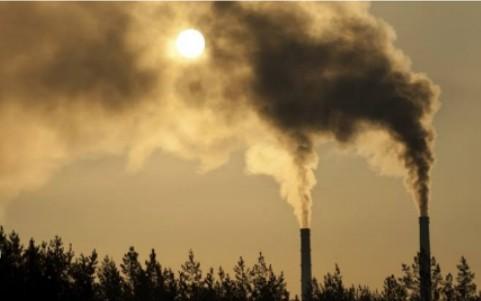Pollution is a multifaceted environmental issue with far-reaching consequences for human health, ecosystems, and the planet's overall well-being. It arises from the introduction of harmful substances or contaminants into the natural environment, exceeding its capacity to assimilate and neutralize them. These contaminants can be in the form of chemical substances, particulate matter, or even energy, such as noise, heat, or light.
Types of Pollution:
Pollution is broadly categorized based on the medium it affects:
Air Pollution: This is one of the most pervasive forms, involving the release of harmful gases and particulate matter into the atmosphere. Major sources include industrial emissions, vehicular exhaust, burning of fossil fuels, agricultural activities (ammonia from fertilizers, methane from livestock), and natural events like volcanic eruptions and wildfires. Common air pollutants include sulfur dioxide ($SO_2$), nitrogen oxides ($NO_x$), carbon monoxide ($CO$), ozone ($O_3$), particulate matter (PM2.5 and PM10), and volatile organic compounds (VOCs).
* **Water Pollution:** Contamination of water bodies like rivers, lakes, oceans, and groundwater. Sources include industrial discharge, agricultural runoff (pesticides, fertilizers), untreated sewage, oil spills, plastic waste, and illegal dumping. Water pollution can lead to the destruction of aquatic life, make water unsafe for drinking and recreation, and spread waterborne diseases.
* **Soil Pollution (Land Pollution):** Degradation of land due to the presence of toxic chemicals, waste materials, and other pollutants. Industrial waste, improper disposal of domestic garbage, agricultural chemicals, mining activities, and deforestation contribute to soil pollution. This can reduce soil fertility, contaminate groundwater, and harm human health through the food chain.
* **Noise Pollution:** Excessive and disruptive noise levels that can have adverse effects on human and animal health. Major sources include industrial machinery, transportation (vehicles, aircraft, trains), construction activities, and loud music. Noise pollution can lead to stress, sleep disturbances, hearing loss, and impaired cognitive function.
* **Light Pollution:** Excessive or misdirected artificial light that illuminates areas where it is not needed, often at night. It disrupts natural light cycles, impacts nocturnal wildlife, and obscures the view of the night sky, affecting astronomical research and cultural heritage.
* **Thermal Pollution:** The degradation of water quality by any process that changes ambient water temperature. This often occurs when industries and power plants use water as a coolant and then discharge heated water back into the natural environment. Increased water temperatures can decrease oxygen levels and harm aquatic life.
* **Radioactive Pollution:** The release of radioactive substances into the environment, typically from nuclear power plants, nuclear weapons testing, and improper disposal of radioactive waste. This type of pollution is extremely dangerous due to the long half-lives of radioactive materials and their potential to cause genetic mutations, cancer, and other severe health problems.
### Causes of Pollution:
The primary drivers of pollution are human activities, largely stemming from:
* **Industrialization:** Factories and industrial processes release a wide range of pollutants into the air, water, and soil.
* **Urbanization:** Rapid growth of cities leads to increased waste generation, vehicle emissions, and strain on infrastructure for waste management and sanitation.
* **Population Growth:** A larger population demands more resources, leading to increased production, consumption, and waste.
* **Agricultural Practices:** Extensive use of pesticides, herbicides, and chemical fertilizers contaminates soil and water. Livestock farming also contributes to methane emissions and water pollution from animal waste.
* **Transportation:** Vehicles powered by fossil fuels are a major source of air pollution.
* **Energy Production:** Burning of fossil fuels for electricity generation releases significant amounts of greenhouse gases and other air pollutants.
* **Waste Management:** Inefficient or improper disposal of solid and liquid waste, including plastics, electronics, and hazardous materials.
* **Deforestation:** Removal of forests reduces the planet's ability to absorb carbon dioxide, exacerbating air pollution and climate change.
### Impacts of Pollution:
The consequences of pollution are widespread and devastating:
* **Human Health:** Respiratory diseases (asthma, bronchitis), cardiovascular problems, cancers, neurological disorders, developmental issues in children, and various infections are linked to different forms of pollution.
* **Ecosystems and Biodiversity:** Pollution degrades habitats, harms wildlife, disrupts food chains, and leads to a loss of biodiversity. Acid rain, for example, damages forests and aquatic ecosystems.
* **Climate Change:** Air pollutants, particularly greenhouse gases, trap heat in the atmosphere, leading to global warming, rising sea levels, extreme weather events, and disruption of ecosystems.
* **Economic Costs:** Pollution incurs significant economic costs through healthcare expenses, reduced agricultural productivity, damage to infrastructure, and loss of tourism.
* **Resource Depletion:** Contamination of water and soil can render these vital resources unusable, exacerbating water scarcity and food insecurity.
### Solutions and Mitigation:
Addressing pollution requires a multi-pronged approach involving governments, industries, communities, and individuals:
* **Policy and Regulation:** Stricter environmental laws, enforcement, and international agreements to limit emissions and promote sustainable practices.
* **Technological Advancements:** Development and adoption of cleaner technologies for industrial processes, renewable energy sources (solar, wind), electric vehicles, and efficient waste treatment systems.
* **Sustainable Practices:** Promoting sustainable agriculture (organic farming, precision farming), responsible consumption, waste reduction, reuse, and recycling.
* **Public Awareness and Education:** Educating the public about the causes and effects of pollution and encouraging individual actions for a cleaner environment.
* **Reforestation and Conservation:** Protecting existing forests and undertaking afforestation programs to enhance carbon sequestration and preserve biodiversity.
* **International Cooperation:** Collaborative efforts among nations to address transboundary pollution issues and share best practices.
In conclusion, pollution is a grave threat to the planet's health and future generations. A concerted and sustained effort from all sectors of society is essential to mitigate its adverse effects and pave the way for a more sustainable and healthy world.

